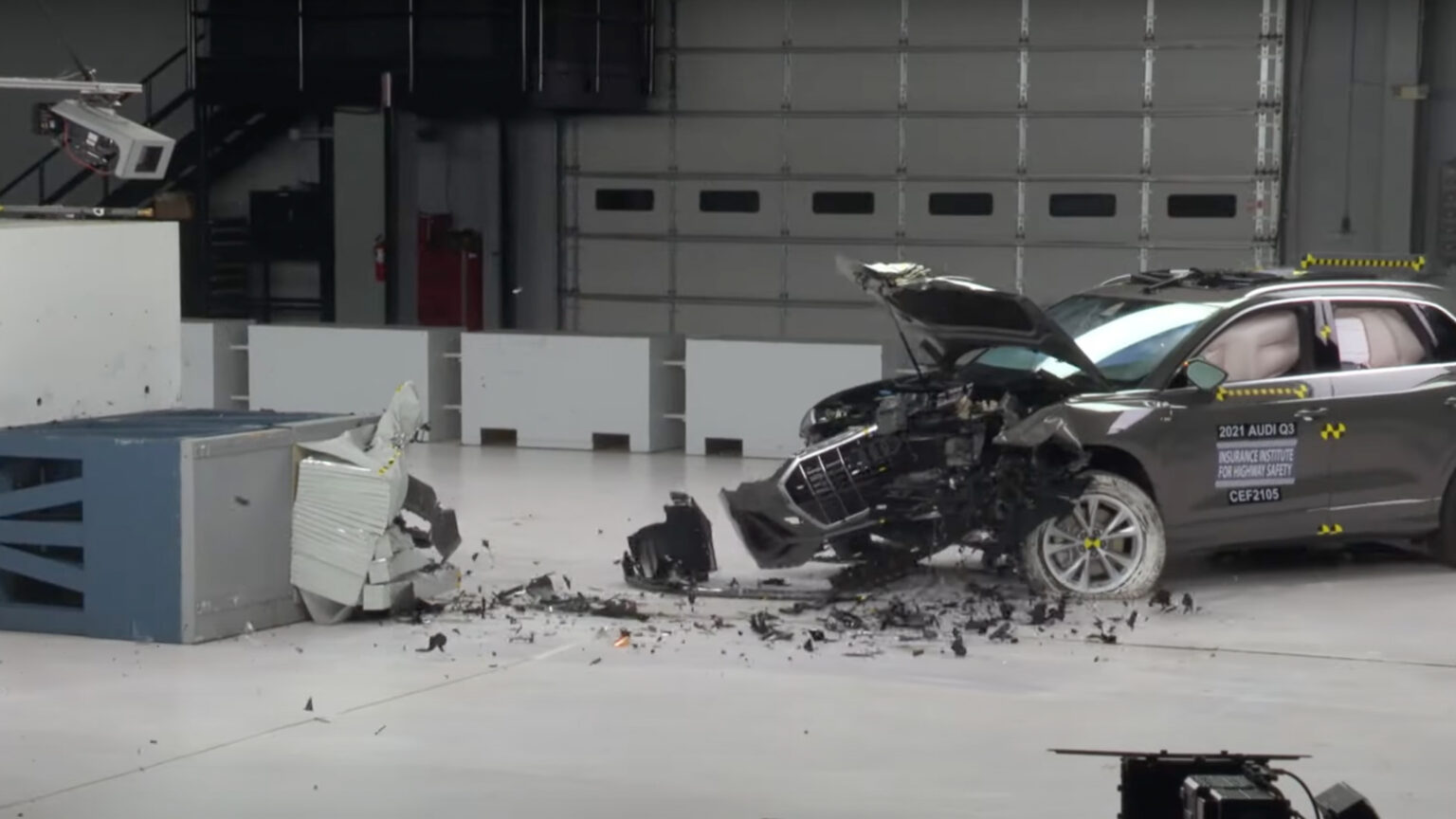The Insurance Institute for Highway Safety (IIHS) crash tests vehicles to determine how well they protect passengers in various collision scenarios. As vehicles change size and shape, the organization updates its testing protocols to account for the evolution. It implemented a new side-impact test earlier this year and is now testing vehicles with a new moderate overlap front crash test.
The IIHS previously lined up vehicles so that 40 percent of the front end of a vehicle strikes the impact barrier at 40 mph. Testing observed how well the vehicle protects front-seat passengers from injury or death, but this new test takes back-seat passengers into account. Shockingly, only two vehicles met the standard for a “Good” score: the Ford Escape and Volvo XC40.
The Audi Q3, Nissan Rogue, and Subaru Forester earned “Marginal” scores, while nine others, including the Honda CR-V and HR-V, Jeep Renegade, and Hyundai Tucson, earned “Poor” scores. It’s worth noting that all vehicles in the test earned “Good” ratings under the previous standards.
The XC40 and Escape earned their scores for minimizing the potential for injury to back seat passengers. In the video released with its announcement, the IIHS notes that both SUVs did an excellent job of preventing passengers from hitting a hard surface in the test. Both vehicles’ seatbelts also remained in place for optimal passenger restraint. The Toyota RAV4 didn’t fare as well, as the IIHS observed the rear seatbelt moving up to the dummy’s abdominal area during a crash, which could more easily cause internal injuries.
An updated test was needed because the most vulnerable passengers often ride in the back seat. The new IIHS test uses a dummy that represents the size of a small woman or 12-year-old child and focuses on metrics related to injuries seen in back-seat passengers. Most new cars feature seatbelt tensioners and other restraints for front-seat passengers, and the IIHS said that all vehicle occupants could benefit from increased safety.








